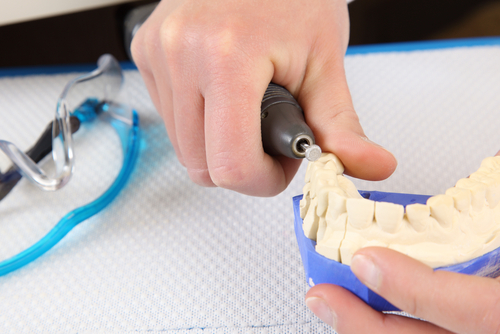10 Things to Know about the Proposed Dental Amalgam Rule—Part 1
 |
1. The problem with amalgam discharges. Mercury is a toxic metal that can have serious neurological and developmental effects on animals and humans. Elemental mercury in dental amalgam is highly concentrated and when discharged to a POTW is generally separated with about 10 percent discharged to surface waters and 90 percent transferred to sewage sludge. When mercury is discharged to water, it can be converted by anaerobic bacteria into highly toxic methylmercury, which is easily absorbed into fat and muscle and has high potential to bioaccumulate in the food chain. One study cited by the EPA found the accumulation “can be profound, with biomagnifications of 100,000 times from algae to top predators….”
2. The environmental and human health benefits of the proposed rule. According to the EPA, the proposed rule, when finalized, is anticipated to reduce the estimated annual nationwide POTW discharges of dental mercury to surface waters from 880 pounds (lb) to 14 lb. In addition, the decreased discharges to POTWs will result in a decrease of mercury in sewer sludge, although the EPA does not anticipate any “non-water-quality impacts associated with air emissions” (such as from incinerated sewage sludge) from the proposed rule. The EPA also anticipates that dental amalgam removed from the wastestream will be recycled to the greatest extent possible, changing the way dental amalgam wastes are managed.
Deliver fast and effective Environmental, DOT, and OSHA training with Environmental Training Library. Get it Now.
3. Applicability of the proposed rule to dental offices. The proposed rule covers dentistry offices that discharge dental amalgam wastewater to POTWs, “including institutions, permanent or temporary offices, clinics, mobile units, home offices, and facilities, including dental facilities owned and operated by federal, state, or local governments.” Not covered by the proposed rule are dental offices that do not place, restore, or remove dental amalgam, such as those practicing oral pathology, oral and maxillofacial radiology, oral and maxillofacial surgery, orthodontics, periodontics, or prosthodontics.
Covered facilities should also note that it is the pretreatment standard that is the requirement, not the use of an amalgam separator to meet that standard. The EPA proposes the amalgam separator as a means for dentists to comply with the proposed standard. However, dental offices that elect not to use an amalgam separator must meet the proposed numeric limit and would be subject to the oversight and compliance requirements for indirect discharges and applicable national pretreatment requirements.
Train Better in 2014
Environmental Training Library combines an extensive library of prewritten environmental training materials developed by BLR’s experts. Get it Now.
4. Applicability of the proposed rule to POTWs. In accordance with 40 CFR 403.8(a), one or more POTWs operated by the same authority with a total design flow greater than 5 million gallons per day (MGD) that receives pollutants from Industrial Users that “pass through or interfere with the operation of the POTW or are otherwise subject to Pretreatment Standards” must establish a POTW Pretreatment Program unless the state with an approved Pretreatment Program exercises its option to assume local responsibilities as provided for in 40 CFR 403.10(e). POTWs with a design flow of 5 MGD or less may be required by the Regional Administrator to develop a Pretreatment Program if circumstances (e.g., process upsets, violations) warrant. However, the EPA says it “anticipates that the approved states will choose to carry out the oversight activities themselves rather than requiring a POTW to develop a full Pretreatment Program solely to regulate its dental dischargers.”
5. State program applicability. According to the EPA, 12 states (Connecticut, Louisiana, Maine, Massachusetts, Michigan, New Hampshire, New Jersey, New York, Oregon, Rhode Island, Vermont, and Washington) have already implemented mandatory programs to reduce dental mercury discharges, and New Mexico’s program becomes effective December 31, 2014. At least 19 localities also have mandatory dental amalgam pretreatment programs. State and local programs will be required to enforce the federal requirements, at minimum.
